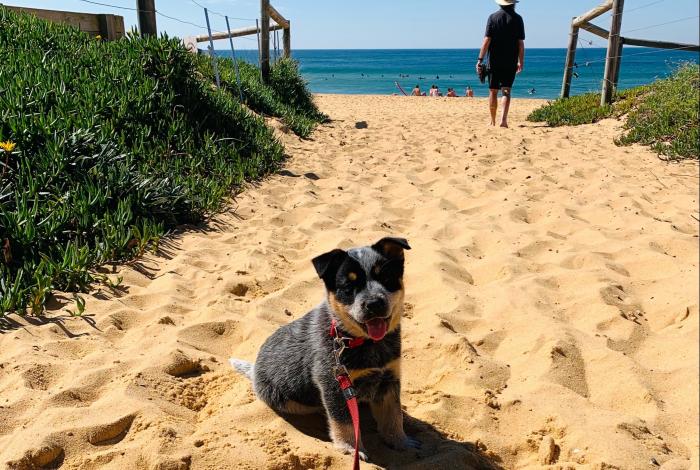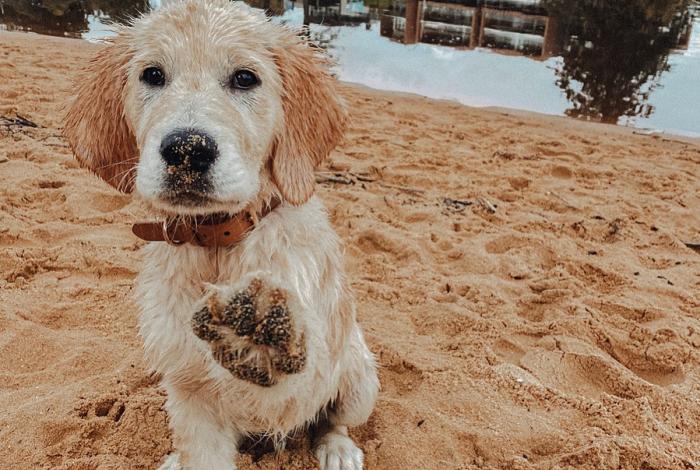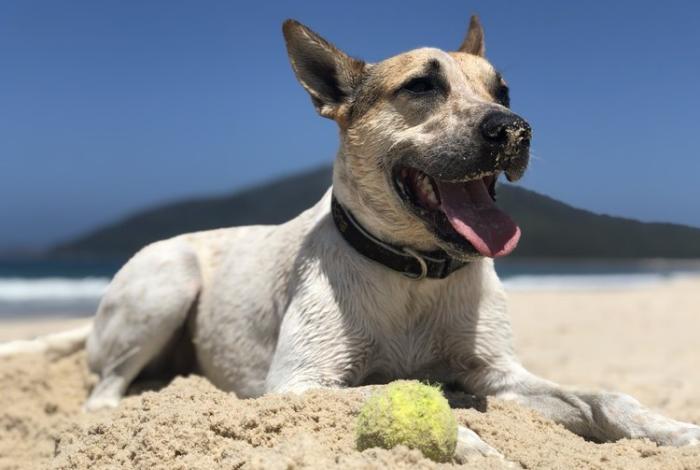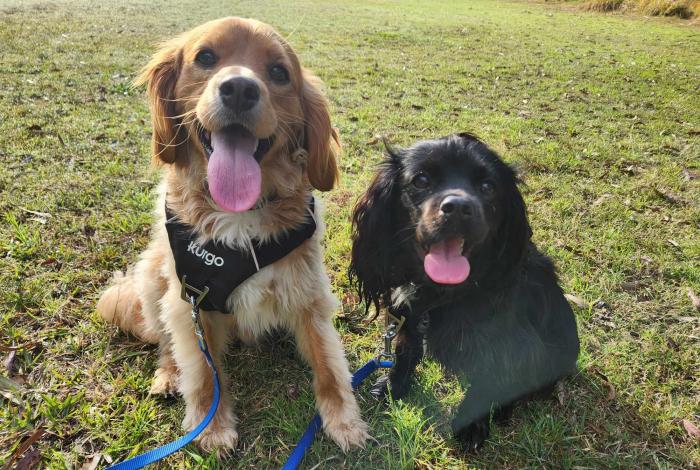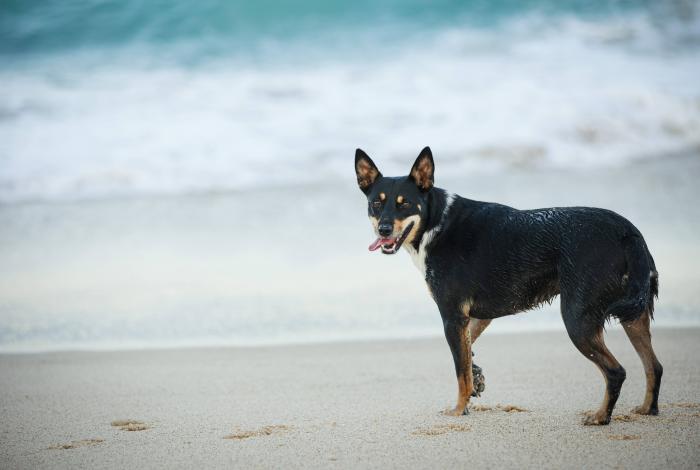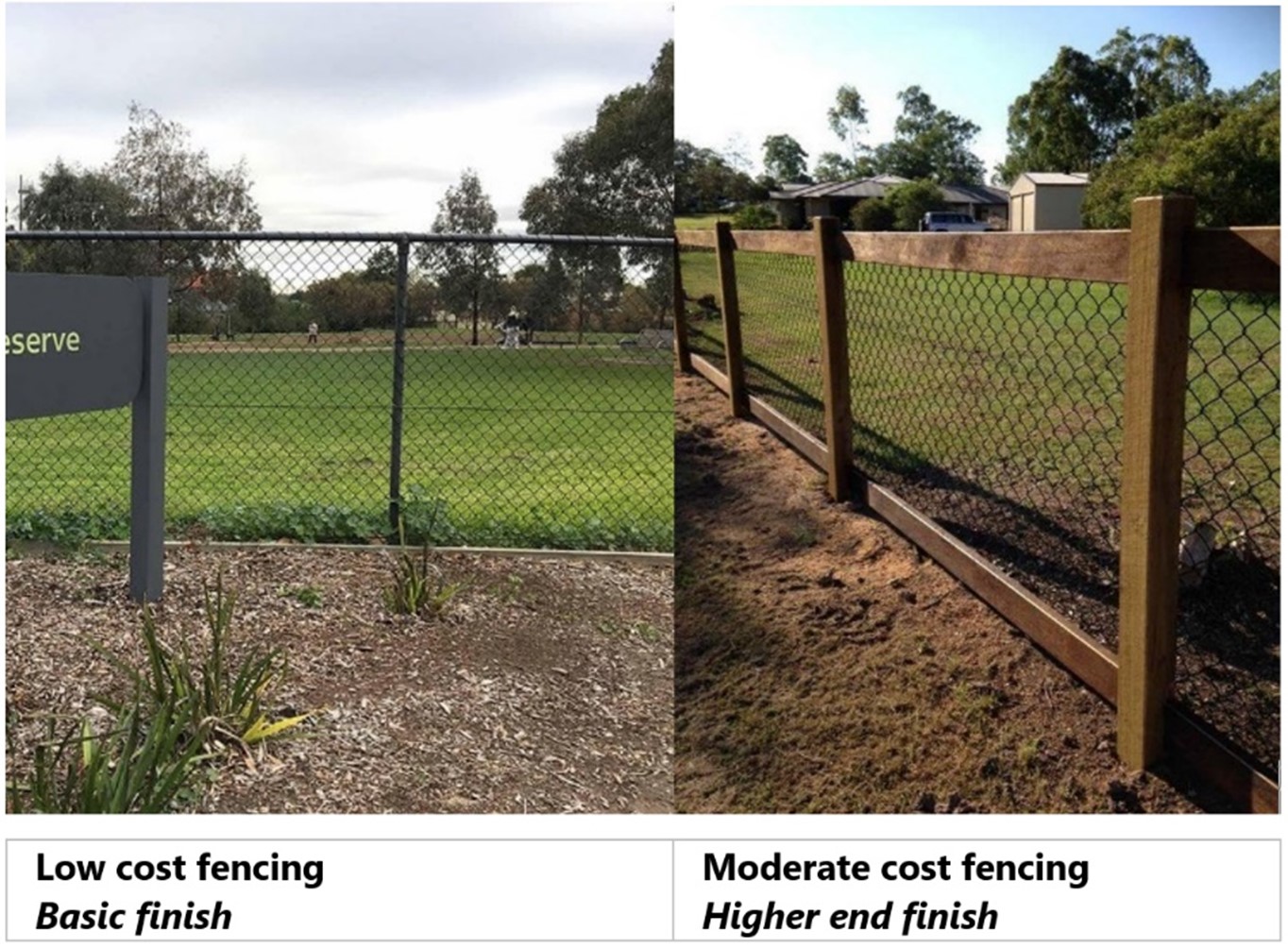Dogs in Open Space Action Plan
Council developed a Draft Dogs In Open Space Action Plan (DIOSAP) in 2022 to improve opportunities for Off Leash Areas on the Central Coast.
This Draft Action Plan aimed to ensure that Council has a well-considered long-term framework for future land planning, management and prioritisation of infrastructure, whilst also providing clear criteria and direction for development to ensure there are adequate areas to accommodate dog exercise locally.
It’s important to understand your responsibilities as a dog owner when taking your pet to public spaces, so that the whole community can enjoy safe and peaceful access to our beaches, parks and open spaces.
This first version of the Draft Plan was publicly exhibited between 1 July and 5pm 26 August 2022 to provide opportunity for community to provide input and feedback on the allocation of dedicated off-leash (OLAs) and fence off-leash (FOLAs), to provide areas for pets to enjoy some time off-leash, under the close supervision of their owner.
Consultation outcomes reporting
Thank you to those who provided feedback on the first version of the draft Dogs In Open Space Action Plan.
We appreciate you taking the time to let us know how Council should manage dogs in open space and acknowledge that it is a complex and important issue.
The feedback you provided was used to refine the actions and inform the revised Dogs In Open Space Action Plan which is on public exhibition between 1 September and 1 October 2023.
We have completed a consultation summary which provides a high-level overview of the numerical feedback collected during the first round of consultation, this can be viewed here.
A detailed consultation report which provides a detailed analysis of what we heard during the first round of consultation is also available and can be read here.
Key issues identified during the first round of consultation were seasonal time restricted beach access for dogs, and the suitability of off leash areas at Davistown, Terrigal and Hamlyn Terrace. Council has been reviewing these concerns to determine options available to address them.
Council staff hosted workshops with key local stakeholders (who contributed during the consultation period) to review the options to address the key issues, a workshop summary report is available here.
The revised draft Plan was tabled at the August Council Meeting where endorsement for the Plan to be re-exhibited for a further 28 days was provided.
It is important to note that there are currently no changes to the management of Council’s open space network.
Basic Documents
Segmented Documents
Timeline
How could I have my say on the first version of the draft Dogs In Open Space Action Plan?
The community were invited to have their say on the first version of the draft Dogs In Open Space Action Plan between 1 July and 5pm 26 August 2022. This could be done by:
- Reviewing the information available on this page
- Providing feedback via:
- Online submission form (now closed)
- Email: ask@centralcoast.nsw.gov.au
- Post: PO Box 20, Wyong NSW 2259
Outcomes reporting
Thank you to those who provided feedback on the draft Dogs In Open Space Action Plan.
We appreciate you taking the time to let us know how Council should manage dogs in open space and acknowledge that it is a complex and important issue.
The feedback you have provided is now being used to refine the actions and inform the final Dogs In Open Space Action Plan.
We have completed a consultation summary which provides a high-level overview of the numerical feedback collected, this can be viewed here.
A detailed consultation report which provides a detailed analysis of what we heard is also now available and can be read here.
Key issues identified during the first round of consultation were seasonal time restricted beach access for dogs, and the suitability of off leash areas at Davistown, Terrigal and Hamlyn Terrace. Council has been reviewing these concerns to determine options available to address them.
Council staff hosted workshops with key local stakeholders (who contributed during the consultation period) to review the options to address the key issues, a workshop summary report is available here.
The revised draft Plan was tabled at the August Council Meeting where endorsement for the Plan to be re-exhibited for a further 28 days was provided.
Revised Draft Dogs In Open Space Action Plan
Council is exhibited its revised Draft Dogs in Open Spaces Action Plan (revised draft Plan) and invited the community to have their say.
The simplified revised draft Plan responds to the extensive community feedback received during the first round of consultation, as well as further technical studies and community workshops undertaken on the key issues of concern. These key issues of concern included seasonal and timed beach access and the potential changes to Off-Leash Areas (OLAs) at Davistown, Terrigal and Hamlyn Terrace.
The revised draft Plan:
- removed the proposal for seasonal and/or timed beach access restrictions
- proposed 13 more OLAs at Bensville, Canton Beach, Davistown, Gwandalan, Killarney Vale, Mannering Park, Ourimbah, Point Clare, Wamberal, Watanobbi, Woongarrah and Yarramalong
- recommended upgrades to most inland OLAs and all fenced OLAs (FOLAs), including proposed drainage improvements and redesign of the Tuggerah FOLA, as well as accessibility enhancements and landscape and sensory elements at Buff Point, Ettalong, Gorokan, Lake Munmorah, Narara and Tuggerah FOLAs
- proposed an expansion of the environmental protection area at Illoura Reserve, Davistown, so as to retain the existing OLA rather than decommission it, and provide an additional OLA at Memorial Park
- proposed the decommissioning of the Terrigal Haven OLA and conversion to an on-leash area with an alternate OLA proposed at Wiles Ave, Wamberal. Note: a potential FOLA at Terrigal Haven will also be explored during the consultation period to seek community input on potentially retaining the ability to have dogs off-leash while addressing safety and conflict of use issues (by fencing an area for dogs off leash at Terrigal Haven). A preliminary Terrigal FOLA option plan has been developed and is available here
- defined effective control and expectations of dog owners in public spaces
- provided an increase in leash length limitations
- proposed improved education initiatives for dogs in open spaces
- proposed a review of resourcing of Ranger Services
- proposed improved signage and off leash mapping for Council’s website
The revised draft Plan sought to balance the variety of community’s views, both for and against relevant proposals contained within the revised draft Plan, with both general and site-specific safety, environmental, social and operational factors.
To find out more, you could:
- read the revised draft Dogs in Open Space Action Plan here
- view relevant background information and the results of the previous consultation here
- attend a pop-up stall at Davistown and Terrigal
- view the frequently asked questions available at the bottom of this page
- view the online interactive map here
Council invited the community to have their say on the revised draft Plan between 1 September and 1 October 2023 via:
- the online submission form (now closed)
- email: dogsinopenspaces@centralcoast.nsw.gov.au
- post: PO Box 20, Wyong NSW 2259
Council understands that this topic is a passionate one for the community. Council also understands that the best outcomes are generated when we work together in a respectful manner to find solutions, where possible, and we look forward to receiving your feedback.
There are currently no changes to the management of Council’s open space network. Changes proposed in the revised draft Plan would not come into effect until a final Plan is adopted by Council and an implementation schedule is developed.
Links
Basic Documents
Segmented Documents
Timeline
What is the purpose of the revised draft Dogs In Open Space Action Plan?
The revised draft Plan will provide Council with a 10-year planning framework to guide and balance decision-making about how and where provision will be made for dog owners and their dogs, and includes:
- A discussion of issues and opportunities relating to dogs in public open space, in particular:
- Additional OLAs recommended to address gaps in the OLA network and OLAs that are recommended for decommissioning, relocation or refinement
- Community education and information requirements
- Compliance, management and operational requirements
The revised draft Plan has been simplified and refined to address feedback received during the first public exhibition period as well as further technical studies and community workshops undertaken on the key issues of concern, which includes, but are not necessarily limited to, seasonal and timed beach access and the potential changes to OLAs at Davistown, Terrigal and Hamlyn Terrace.
Why do we need a Dogs In Open Space Action Plan?
This revised draft Plan has been developed in recognition of the high rates of dog ownership across the Central Coast and will provide Council with a 10-year planning framework that will allow for considered implementation of identified actions. The revised draft Plan has been prepared in consideration of the broad diversity of demands that are placed on our open space network while balancing a range of often competing interests (general and site-specific safety, environmental, social and operational factors).
A final Plan (if endorsed) will allow Council to ensure budget allocations can be made to identified actions and will support future grant funding applications, while giving confidence to the community about Council actions.
What information was used to inform the development of the revised draft Dogs In Open Space Action Plan?
Prior to the first version of the draft Plan, Council had consulted with the community on a range of topics over time including the Special Rate Variation, Our Coast, Our Waterways, Responsible Dog Ownership Policy, and more. During these conversations with the community, dogs as well as relevant infrastructure and environmental considerations were explored. Council used the information collected throughout these consultation activities, as well as industry best practice and learnings from other local councils, to inform the development of the first draft Plan.
When exhibiting the first draft Plan, Council received extensive feedback from the community which resulted in Council’s Administrator requesting that a simplified and revised draft Plan be developed (Council resolution, Council Ordinary Meeting 13 December 2022). In developing the revised draft Plan, Council then hosted further workshops with selected participants to further refine and discuss solutions to some of the key issues of concern. The revised draft Plan responds to this feedback and the abovementioned Council resolution.
How has the revised draft Dogs In Open Space Action Plan responded to community feedback?
The following changes have been made from the first draft Plan to this revision as a result of community consultation and further investigations of specific sites/concerns:
|
Table 1 – Adjustments to DIOSAP version 1 |
||
|
Topic |
Proposed change to DIOSAP |
Comments |
|
Document revised to be more accessible to readers |
Document revised |
|
|
Off leash beaches |
Proposed time/seasonal access retracted |
Off Leash Beach access to remain unlimited by timed access or seasonal access |
|
Illoura Reserve, Davistown |
Boundary change proposed |
Previous proposed site at Pine Ave was not preferred by community groups and concerns raised with safety risks at Memorial Park. Proposed expansion of protected area at Illoura given environmental sensitivities but retention of reduced OLA rather than decommissioning and conversion to an on-leash area (See next FAQ) |
|
Terrigal Haven, Terrigal |
New proposed site at Wiles Ave, Wamberal |
This alternate site offers parking, amenities as well as social and accessibility options with the OLA at Terrigal Haven to be decommissioned and converted to an on-leash area (See next FAQ) |
|
Caravel St, Hamlyn Terrace |
Proposed OLA retracted |
No alternative site required as proposed Hilltop site Is within 3km. |
|
Adelaide St, Killarney Vale |
Alternate site proposed at Wyong Rd, Killarney Vale |
Adelaide St Site Conflicts with lease of facility to local sportsgroups Alternative site proposed off Wyong Rd |
|
Adcock Park, West Gosford |
Boundary Change retracted |
Area outside of shared path not significant enough to cater for off leash activity. OLA to remain as is |
|
Thames Drive, Erina |
Boundary Change retracted |
Shared path not formalised through area so prohibition from this path is not required |
|
Captain Cook Reserve, Green Point
|
Boundary Change retained |
Boundary change to exclude 10m buffer zone from playspace |
|
Oberton Street Reserve, Kincumber |
Boundary Change retracted |
Shared path not formalised through area so prohibition from any path is not required |
|
Lake Munmorah, Fenced OLA |
Fencing to remain or to be extended in size |
Fencing retained on site to delineate between road and playspace |
|
Sportsgrounds |
Sportsgrounds no longer proposed to be dogs prohibited. On leash only. |
Sportsgrounds to be a on leash only areas, off leash use prohibited |
|
Leash length requirement |
Leash length limitations now extended to 2.4m |
Extended leashes are dangerous to dogs, their owners and nearby pedestrians |
|
Effective Control Requirements |
Leash length amended, recall, tethering and site line requirements amended |
These requirements have 16been amended to be more inclusive for responsible dog owners |
What further changes have been made following Council’s Ordinary Meeting in August 2023?
At the 22 August 2023 Council Meeting, Council resolved to:
- add Memorial Oval, Davistown as an additional OLA to increase the total number of off leash areas in Davistown (and therefore offset the proposed reduction in OLA size at Illoura Reserve, Davistown), and
- progress an option for potentially developing an FOLA at Terrigal Haven (and therefore reduce safety and conflict of use issues), and publicly exhibit this option alongside the revised draft Plan for not less than 28 days. The option must include information on funding, aesthetics and other impacts. The community’s feedback on this option should be included in the further report.
Does the revised draft Dogs In Open Space Action Plan recommend the consideration of seasonal and/or timed beach restrictions?
No. Following community feedback, and review of that feedback, Council is no longer proposing a change in seasonal and/or timed beach restrictions.
Does the revised draft Dogs In Open Space Action Plan propose an increase in the total number of Off Leash Areas?
Yes. The revised draft Plan proposes an increase of 13 new OLAs, taking the total number of OLAs servicing the Central Coast from 61 to 68 (net increase based on the number of proposed new OLAs v the proposed decommissioned OLAs while also taking into account the Council resolution of 22 August 2023 regarding Memorial Park).
The proposed new OLAs are:
- Hilltop Park, Woongarrah
- To address gap in provision
- Considers further growth of Warnervale area
- Kurrawa Ave Reserve, Point Clare
- To accommodate the relocation of the OLA from Fagan Reserve
- Lara Cl Reserve, Ourimbah
- To address a gap in provision
- Linga Longa Reserve, Yarramalong
- To address a gap in provision
- Memorial Oval, Davistown
- To accommodate additional provision within Davistown
- Portside Cl, Bensville
- To address a gap in provision
- Robertson Rd Reserve, Killarney Vale
- To address a gap in provision
- Tunkawallin/Kanangra Dr Reserve, Gwandalan
- To address a gap in provision (site will need significant development prior to use)
- Watanobbi Knoll, Watanobbi
- To address a gap in provision
- Wattle St Reserve, Canton Beach
- To address a gap in provision
- Warwick Ave Reserve, Point Clare
- To address a gap in provision
- Wiles Ave, Wamberal
- To accommodate the relocation of the OLA from Terrigal Haven
- Wyong Rd, Killarney Vale
- To address a gap in provision
Does the revised draft Dogs In Open Space Action Plan propose any changes to the existing Off Leash Areas?
Yes. The revised draft Plan proposes modifications to the boundary of nine OLAs. These changes are recommended to:
- Clearly define OLAs using site landmarks
- Define playspaces where dogs are prohibited from entering in line with the Companion Animals Act 1998 and Council Orders
- Reinforce the regulatory requirements to keep dogs on a leash on footpaths
OLAs will continue to be reviewed to ensure boundaries minimise any conflict with off-leash activities.
The sites identified, together with the rationale for boundary changes are outlined below:
- Captain Cook Reserve, Green Point
- To exclude playspace from OLA.
- Craigie Reserve, Kanwal
- To exclude playspace from OLA.
- Greenvale Rd Reserve, Green Point
- Extension from 1400sqm Ha to 3000sqm to include more open space.
- Illoura Reserve, Davistown
- To mitigate environmental sensitivities.
- James Watt Drive, Chittaway Bay
- To exclude shared footpaths and sportsground from OLA.
- Lake Munmorah Fenced OLA
- Define boundary to exclude off leash dogs from sportsground and bushland.
- Mataram Ridge Park, Woongarrah
- Relocation of OLA within reserve to resolve environmental conflicts in existing OLA.
- Evidence of significant use by dogs off-leash in proposed area.
- North Avoca Beach
- Extension south to ‘shark tower’ to easily identify boundary.
- Peppercorn Ave Reserve, Woongarrah
- To exclude playspace and shared pathways from OLA.
- To exclude playspace and shared pathways from OLA.
Does the revised draft Dogs In Open Space Action Plan propose the removal of any existing Off Leash Areas?
Yes. The Central Coast is constrained in finding provision opportunities because of limitations associated with sensitive environments (including National Parks), the availability of appropriate sites within residential catchments, and the geography and topography of various localities.
Historically, local government areas have attempted to accommodate requests by residents for off-leash access to parks without a full understanding of the implications particularly relating to:
- conflict with other recreation activities
- risk management considerations relating to proximity of OLAs to trails/pathways, roads/ carparks and cliff tops
- proximity to sensitive flora and fauna habitats
- sites that are too small
- assumptions that owners would be able to control their dogs in line with regulations and in consideration of other parks users.
As a result, often unsuitable sites were set aside for off-leash activities. In addition, there has been a significant shift in community attitudes and expectations in relation to the control of dogs and the impact they can have on sensitive environments and community enjoyment of public open space.
The revised draft Plan has identified five sites that are proposed to be decommissioned as OLAs and, where possible alternative sites identified within the catchment provided.
Rather than prohibit dogs from Terrigal Haven the revised draft identifies this reserve for on leash activity only. Additionally, a fenced option is also open for community feedback.
The sites identified, together with the rationale for decommissioning, leashing or relocating are outlined below:
- Fagan Reserve, Point Clare
- Decommissioning and relocation of the OLA to Kurrawa Reserve (Point Clare)
- Conflict with sporting activity and close proximity to Brisbane Water Drive
- Kariong Recreation Reserve, Kariong
- Decommissioning
- Skatepark sits within this reserve, with a playspace proposed in coming years and remaining open space is limited
- Lees Reserve, Chittaway Bay
- Decommissioning
- This is a densely vegetated site being regenerated for catchment protection
- There is no evidence that the site is used for dog walking/off-leash activities
- Terrigal Haven, Terrigal
- Proposed as on leash only with a new OLA proposed at Wiles Avenue, Wamberal
- High levels of constant vehicle activity within immediate proximity
- High pedestrian traffic areas along its boundary and associated pathways
- The natural amenity of the site has been severely impacted by dog activity because of its gradient
- Proximity of cliff edges
- Alleged non-compliances regarding leashing for those access the OLA
- Conflict between dogs and other users of the site
- Note: a potential FOLA at Terrigal Haven will also be explored during the consultation period to seek community input on potentially retaining the ability to have dogs off-leash while addressing safety and conflict of use issues (by fencing an area for dogs off leash at Terrigal Haven). A preliminary Terrigal FOLA option plan has been developed and is available here, <link to option>
- McEvoy Drainage Easement, Umina Beach
- Decommissioning
- Conflicts with shared use thoroughfare
- Not currently listed as an OL A on Council’s website/promotional material
- Site adjacent to McEvoy Oval. The Plan does NOT propose any changes to Umina Off Leash Beach.
What is happening with the OLA at Illoura Reserve, Davistown?
Illoura Reserve, Davistown and its adjacent area, are known through both anecdotal and ecological studies, to provide potential and/or actual habitat for a variety of threatened species including the critically endangered Eastern Curlew (EC), the endangered Bush Stone-curlew (BSC) and the endangered Pied Oystercatcher, amongst other vulnerable species. As such, Council originally proposed to decommission this OLA and convert it to an on-leash area, with new OLAs proposed at Memorial Park and Pine Avenue.
Following the public exhibition of the first draft Plan and the targeted community workshops held in August 2023, Council is seeking to balance community views with environmental considerations and is now proposing an increase in the protected area resulting in a reduction in the OLA, while maintaining off-leash activities. This reduction is now proposed to be offset with the inclusion of an OLA at Memorial Park, which will be partially fenced to address and safety risks (i.e., the park/road interface for example).
It is also important to address commentary regarding the recent ecological study that was undertaken in respect of Illoura Reserve.
- Council staff followed relevant procurement policies to engage an independent ecologist to undertake the threatened species assessment at Illoura Reserve.
- The historical employment of the ecologist by a pre amalgamated Council over 18 years ago is not considered an actual conflict of interest in relation to the works commissioned to be undertaken in relation to the revised draft Plan. It is up to the reviewer of such reports to review the accuracy of the report, and their findings, and assess those findings in relation to sound scientific methods and established norms in the respective field, which Council staff have done on receipt and finalisation of the report. Furthermore, commentary that Council staff somehow unduly influenced the report by requesting amendments are untrue and unfounded. Council staff, in reviewing the report, sought clarification on editorial/typographical amendments only, which is common practice. Council staff did not seek amendment in relation to the substance of the report or the findings of the report.
- The affiliation of an ecologist with environmental groups is not considered an actual conflict of interest in regard to providing advice to Council as it is reasonable to assume that an ecologist involved in biodiversity conservation has an interest in the preservation of vulnerable and/or endangered species.
- Commentary about the lack of the BSC in the OLA or the protected area are misleading. This species has not been previously recorded nesting or roosting on the site however, there are many records of it foraging including during the 2023 surveys. The BSC recovery plan states that a threat to the BSC are dogs off leash so it is entirely possible that any BSC population in this locality are affected by the ongoing presence of off-leash dogs. Furthermore, other threatened/vulnerable and endangered species identified near to the OLA show that there are other species of concern that Council is required to consider.
- Council, when making decisions, is required under section 8A of the Local Government Act 1993 to consider a number of principles which includes, but is not limited to, the diverse local community needs and interests (section 8A(2)(a)), the long term and cumulative effects of actions on future generations (section 8A(2)(c)) and the principles of ecologically sustainable development (section 8A(2)(d)). The latter includes consideration of the precautionary principle, preservation of biological diversity, and the integration of the protection of ecological processes and natural systems with economic development and social development. The proposed amendments to the OLA at Illoura Reserve are Council’s attempt to balance all these considerations.
What is happening with Terrigal Haven OLA?
Terrigal Haven OLA is recognised as a popular site for Off Leash activity. However the site:
- has high levels of constant vehicle activity within the immediate proximity
- has high pedestrian traffic area along its boundary and associated pathways
- has had its natural amenity impacted by dog activity due to its gradient
- is in close proximity to cliff edges
- has high levels of non-compliance regarding leashing requirements surrounding the OLA
- is subject to conflict between dogs and other users of the site
The revised draft Plan recommends that the Terrigal Haven OLA be converted to on-leash area and proposes a new OLA at Wiles Ave, Wamberal to fill the gap in grassed OLA provision for the area.
At the 22 August Council Meeting, Council resolved to investigate an option for developing a FOLA at Terrigal Haven, and publicly exhibit this option alongside the revised draft Plan for not less than 28 days. The option must include information on funding, aesthetics and other impacts. The community’s feedback on this option should be included in the further report.
A preliminary Terrigal Haven Fencing Option plan has been developed and is available here. Early estimates show the approximate cost to be between $200,000 and $250,000 for a FOLA at Terrigal Haven. A range of fencing options for OLAs are available with the below images representing both ends of the cost scales.
Why does the Dogs In Open Space Action Plan suggest the removal or minimal use of fencing for off leash areas?
FOLAs often amplify the issues we see in OLAs as the dogs are more centralised and concentrated within the reserve.
Due to this concentrated use the below issues are amplified:
- Risks to young children and prams
- Unattended or uncontrolled dogs
- Dog owners not being vigilant
- Increased likelihood of dog bites, attacks and rushing
- Ground erosion from concentrated use
- Excludes shared use
FOLAs are not intended for uncontrolled, aggressive or unsocialised dogs. These dogs should always be on a leash when in a public place.
For these reasons, the fencing of an OLA will only be considered if in close proximity to a sensitive environment or for safety reasons (e.g., close proximity to a busy road, playspace or sportsground). In these cases, preference should be given to partial fencing or natural landscape barriers (e.g., Planting)
All of Council’s 6 current FOLAs (Buff Point, Ettalong, Gorokan, Lake Munmorah, Narara and Tuggerah) will remain fenced.
How is ‘effective control’ of dogs defined?
The Companion Animals Act 1998 (CAA) requires dog owners to keep their dog under ‘effective control’ but does not provide any criteria that defines the meaning of ‘effective control’, other than mandating that dogs be on lead in public places not declared off-leash.
The revised draft Plan states:
There is significant community frustration with common non-compliances such as dogs being off leash, dog litter and effective control.
Dogs control and compliance issues affect all public reserves, therefore Ranger resources need to be applied to on leash areas and dogs prohibited areas in addition to OLAs.
It is a requirement of the CAA that a dog that is in a public place must be under the effective control of some competent person by means of an adequate chain, cord or leash that is attached to the dog and that is being held by (or secured to) the person.
In additional to the above, It is recommended that Council adopt the following requirements to define ‘effective control’ of dogs and the expectation of their owners:
In on-leash areas dogs are:
- to be on leash at all times and within CAA age and capability requirements
- to be on a leash (max length 2.4m)
- not be tethered to a fixed place or object whilst unattended by their owner
In OLAs dogs are to:
- be able to be recalled at owner’s commands
- remain within clear sight of their owner
Dogs are not permitted to enter dogs prohibited areas.
Does the revised draft Dogs In Open Space Action Plan consider future population growth?
Yes. An estimated approximation of 65,000 dogs were residing within the Central Coast LGA in 2022, with an estimated projection of 80,000 dogs by 2032.
The Office of Local Government indicates an approximate150,000 microchipped dogs on the Central Coast with an approximate 110,000 registered dogs in 2023, however deceased and relocated pets are not identifiable from database records. As a result, dogs registered since 1988 remain on the NSW Government database.
Only dogs listed on the registration database as of 2008 were included in dog population counts for the revised draft Plan. These 55,257 dogs are likely to be an overestimation on the basis that dogs have an average lifespan of 11/12 years. According to Animal Medicines Australia (AMA), the ‘owned’ dog population in Australia is likely to be significantly higher than is reflected on registration data bases around the country.
The revised draft Dogs In Open Space Action Plan lists a number of actions, how will these actions be funded?
Council staff will continue to explore funding opportunities to deliver the actions identified in the strategy in accordance with their listed priority. This may be through funding available in Council’s recurrent annual budget (Operational Plan) or via other external funding opportunities (e.g., Grants) as they become available.
Any final Plan (if endorsed) will be reviewed every 2 years to ensure that new and emerging needs are identified and addressed.
Why has a plan been developed if there is no funding to deliver the actions identified?
Ideally, all plans and strategies of Council would have full funding secured before development and adoption, but this is unrealistic. Often, councils are only eligible for grants if there are adopted actions identified in a Council endorsed strategy. In order for Council to allocate funding in the annual budgets or attract funding from external sources such as grant funding, it is a significant advantage for an adopted strategy or plan to be in place.
The exhibition of the revised draft Plan provides the community with an opportunity to let Council know if we’ve got it right. Once a final Plan is in place (if adopted), Council will explore funding opportunities to deliver the actions identified in the Plan in accordance with their listed priority.
How could I have my say on the draft Dogs In Open Space Action Plan?
Council invited the community to have their say on the revised draft Plan between 1 September and 1 October 2023 via:
- the online submission form (now closed)
- email: dogsinopenspaces@centralcoast.nsw.gov.au
- post: PO Box 20, Wyong NSW 2259
Council understands that this topic is a passionate one for the community. Council also understands that the best outcomes are generated when we work together in a respectful manner to find solutions, where possible, and we look forward to receiving your feedback.
